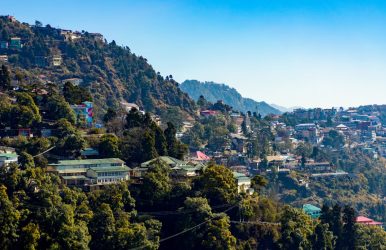8 Best Places To Live In Australia For You If You Have A Family
BY sagnika Apr 27, 2024
Let me share an overview of the eight best places or cities where you can live in Australia. Of course, I have my preferences based on certain criteria, ensuring that I live a good life with safety and positivity. Considering the distance from my workplace, transportation, and connectivity to the marketplace and shops are immensely important. If I plan my future in a place, I will choose one that has nature surrounding it and a cultural aspect of the local community. Read the article to explore eight places that are considered some of the best places to live in Australia. I will help you understand these cities better and how they can offer you some of the best opportunities related to your lifestyle and personal and professional life. 8 Best Places To Live In Australia For You If You Have A Family! Australia has some of the best cities for you to work and live in! Let me create a list of eight places that offer several opportunities for you to create a beautiful lifestyle, either as an individual or as a family person. In these cities, you can grow professionally because they offer some of the finest places to work and live. This includes top employers, the best organizations, a balanced cost of living, and more. Wondering about the best time to visit Australia? Keep reading! There are also other services, such as hospitality, customer service, and agriculture, which you can access if you plan to live in one of these cities in Australia. Whenever you plan to move to one of these cities, you get the best opportunities and enjoy your life to the hilt! 1. Melbourne Did you know Melbourne is considered the top city in Australia to live in? When you compare its affordability with Sydney, another popular city in NSW, you will see that it is much more affordable than Sydney. Over the past four decades, there is an apparent average price difference between the two cities of 1.36 times! According to the Australian Broadcasting Corporation, Sydney is 22% more expensive than regarding in terms of accommodation. One of the major reasons for this is the price of housing. Housing in Melbourne is much more affordable, along with stability, education, infrastructure, and healthcare. Melbourne's cultural scene is where you can visit museums, popular music, galleries, festivals, and other places. You can see different places that bring you closer to nature. In 2023, Melbourne was called the "most livable city in Australia"; hence, when you start living there, you will experience a life full of colours! Apart from that how can we forget about the beaches in Melbourne? 2. Sydney Sydney is the capital of the state of New South Wales and one of the most popular cities in Australia. Furthermore, Sydney is the second-best place to live in Australia. With its coastal location, it offers some of the best visuals! Now, your question: Why do I say that? Some reports also tag Sydney as the fourth best place to live worldwide. Some of Sydney's significant aspects make it quite amazing, such as excellent weather, social infrastructure, and employment opportunities. The beaches in Sydney are another reason you get to live there! There are more employment opportunities in Sydney than in Melbourne in IT, tech jobs, design, technologies, and science. Sydney's culture and food are quite good, which is alluring if you are planning to live in Australia. 3. Adelaide In my list, Adelaide is the third best city to live in Australia, especially because it is so affordable. There are many green spaces, which you can access whenever you want. When it comes to accommodation, Adelaide is the most affordable! According to Propertyupdate.com.au, you can rent houses in Adelaide at a median price of $393! If you live closer to one of the bustling markets of Adelaide, you can experience some of the best food and culture in the city. Let me also highlight that Adelaide has a family-friendly atmosphere and a relaxed lifestyle. If you want to live life ambitiously yet do not prefer the regular hustle-bustle of cities, this is the place for you. 4. Brisbane The fourth city I have included in this list is Brisbane, which is well known for its educational services and healthcare opportunities. I am here to highlight the opportunities that you will receive once you move to Brisbane. The average cost of living for a single individual in Brisbane ranges between $400 and $750 weekly. Of course, your choices, living quarters, and expenses factor into this rate, so you need to do careful budgeting if you plan to live here. At times, certain factors make it easy for people to misunderstand or misinterpret Brisbane's nature. Frequent crime and an increasing negative perception of people make it difficult for people to understand Brisbane's genuineness as a city. 5. Perth Perth is a student-friendly city on the western coast of Australia. If you plan to pursue an academic career soon, you can plan on living in Perth. The city offers diverse options for gastronomic, recreational, and cultural activities. Two of the top Australian institutions are in Perth: Murdoch University and the University of Western Australia. The universities and educational institutes in Perth are quite supportive, encouraging students to achieve more and have a social life. If you compare all these places in Australia and their cost of living, Perth is the cheapest, with a total of AUD$2200 monthly! Perth has a diverse job market in construction, information technology, tourism, and healthcare. Several tourist attractions are located in West Perth, such as the Scitech Discovery Center, Cottlesloe Beach, the Pinnacles, and Kings Park. The climate is pleasant, and there is a beautiful burgeoning arts scene, so if you are an artist, this is the perfect place for you! 7. Canberra Canberra, the capital of Australia, is known for its cosmopolitan environment. If you plan to relocate to Canberra for work purposes, you are making the best choice. This place is one of the safest cities in Australia and is filled with international visitors. The city offers you information technology and consulting services and employment opportunities that you can apply for! These are the most popular employment opportunities. Let's remember the educational institutes such as Canberra University and Australian National University that welcome international students. The city's top attractions are the Black Mountain Tower, a man-made lake in the city centre, and the Captain James Cook Memorial. You will also lose yourself in the diverse food options in restaurants such as Water's Edge Restaurant, Table Canberra, Les Bistronomes, Olive at Hawker, and others. 8. Gold Coast Located in the north of Brisbane, Gold Coast is one of the most popular areas of Australia for greatest surfing! There are about four universities in the city, and 30,000 university students live there to pursue their education and grow professionally. There are interesting job opportunities available, along with several chances of you becoming a business owner by opening a cafe or a small business based on your qualifications and interests. Let me also mention some of the cutest amusement parks—maybe that is why it is known as the "theme park capital of Australia!" I suggest you visit Dreamworld, WhiteWater World, Warner Bros. Movie World, Sling Shot Gold Coast, and others. Food and culture are a winning combination; thus, you can get the best of both worlds when you start living on the Gold Coast! 8. Newcastle If you love living in a place with a strong community sense, Newcastle is the place for you! It is on the New South Wales Coastline, offering career opportunities and an affordable lifestyle. If you prepare for better educational opportunities, you can get admission to the University of Newcastle. If you have friends and family in Sydney, it will take two hours to reach Newcastle! Apart from being the seventh largest city in Australia, Newcastle provides a luxurious coastal life. You should also check out the restaurants in Australia as they give you a slice of life! If you hate congestion and the busy lifestyle of big cities, you can enjoy an easygoing lifestyle in Newcastle. Finishing Off... To sum it up, Australia as a nation is one of the most economically stable countries in the world. Yes, there are shortcomings, but I have made a list of cities that you can consider if you plan to relocate. Be it for job opportunities or personal reasons, you can consider these places. Why is it important for you to go through these places in detail before you plan to relocate? You learn about the little things that might not seem important at first but can matter a lot when you start living there permanently. Comment on which place you think is perfect for relocating in the list and name the reason! Learn More About: 6 Tips For A Luxurious Trip To Australia Budget-Friendly Travel Ideas In Australia 10 Things You Have To Do When You Visit Australia Top Restaurants In Maitland Australia That Give You Culinary Delights












